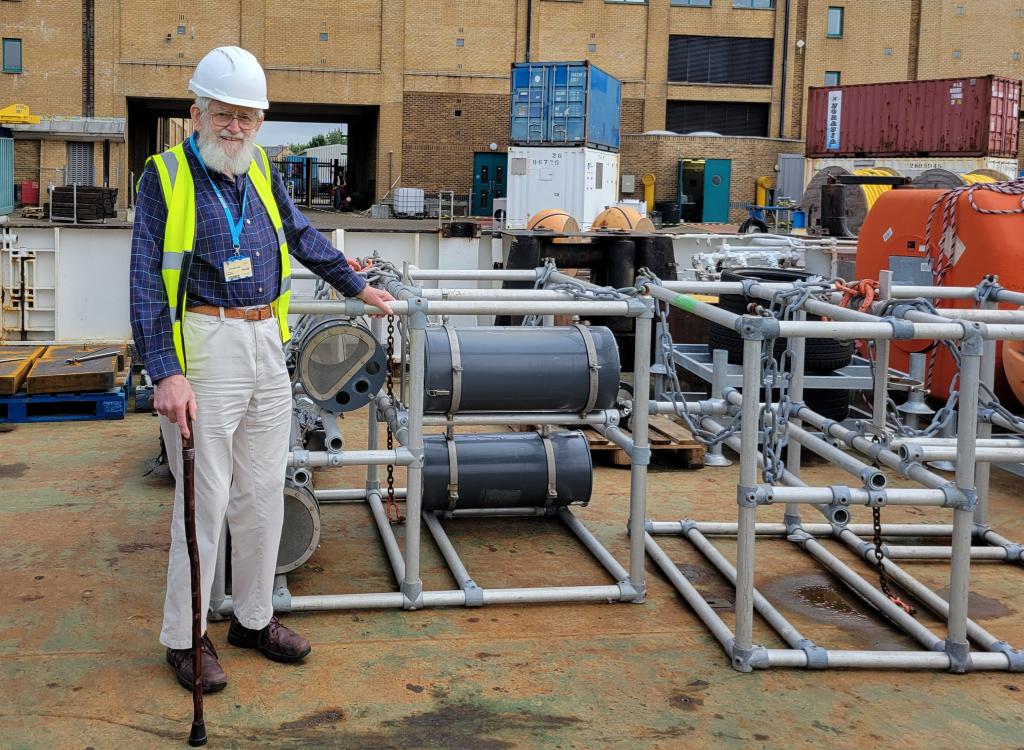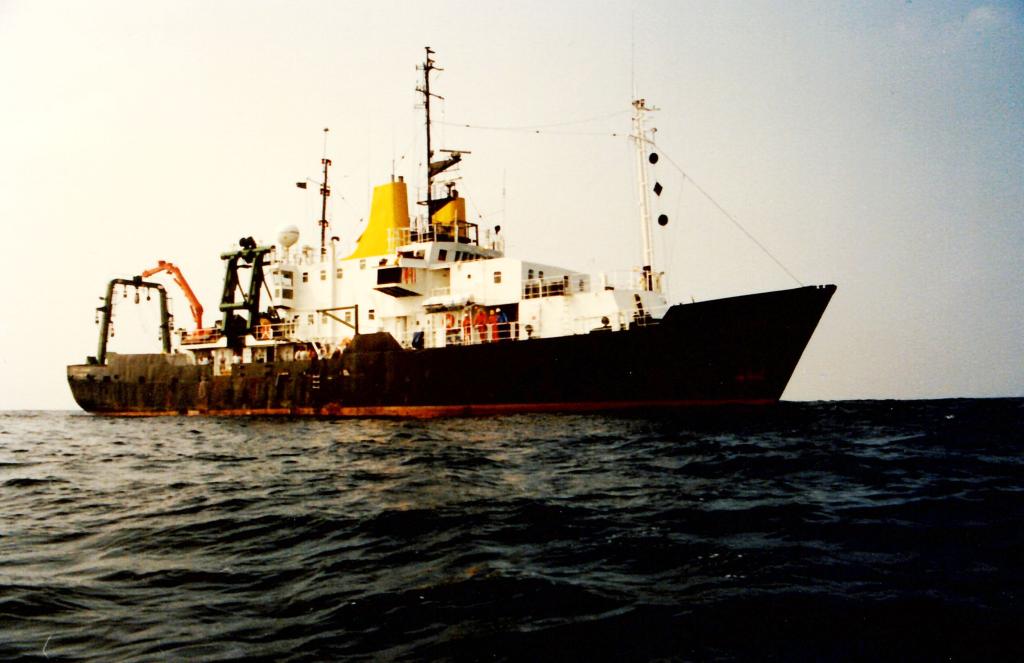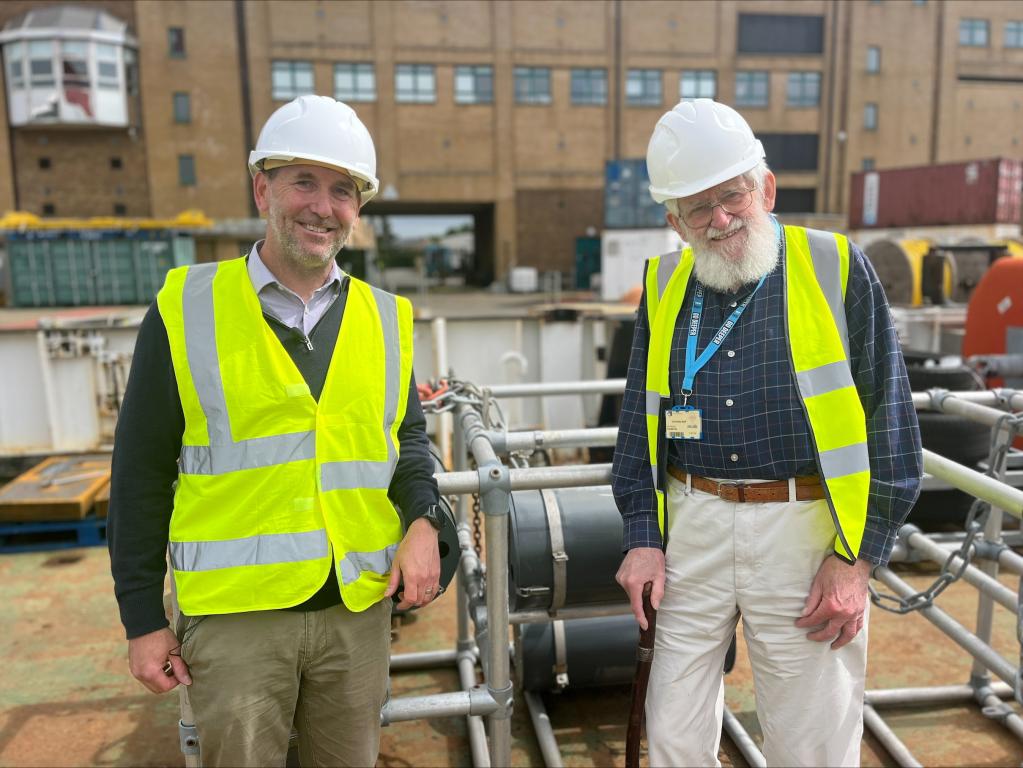This year marks a major milestone in the story of deep-sea exploration: the 40th anniversary of the first dedicated scientific expedition to the Porcupine Abyssal Plain Sustained Observatory (PAP-SO).

Located some 800 km west of Lands End, PAP-SO is one of the most remote sites in the North Atlantic — but it’s also one of the most important. Over four decades, it has become one of the world’s longest-running deep-ocean monitoring programmes, offering rare and invaluable insights into life nearly 5,000 m below the surface.
The observatory’s story began in 1985, when distinguished oceanographer Mike Thurston led the first in-depth scientific mission to the site. That expedition, onboard the Royal Research Ship (RRS) Challenger, laid the foundation for decades of research into deep-sea biology and ecology.
But Mike’s path to that breakthrough moment started years earlier — sparked not by a grand vision of exploration, but by an unexpected fascination with some of the ocean’s more overlooked residents: amphipods.

An unexpected passion – discovered at Flatford Mill
Mike's fascination with these small crustaceans was perhaps an unlikely encounter. He had studied botany and zoology at A-level. But, in 1956, when it came to choosing what to study at university, he had been at a loss and chose organic chemistry. By the end of the first term, he had decided it wasn’t for him.
He got back on the right path after what – to others – was a gruelling six-hour exam to get onto a marine biology degree at University College London (UCL). UCL’s exam wasn’t based on the standard A-level syllabus, making it hard for others. But for Mike, it covered areas close to his own interests, so he got in.
There, during a first-year, self-organised field trip at the picturesque location of Flatford Mill – Constable country – in Suffolk, he and a group of students were tasked with sampling freshwater weed for amphipods.
The challenge of sexing these creatures sparked an unexpected and enduring interest. Despite the fact that most of his peers likely forgot about the experience, Mike didn't.
It was a pivotal experience: "It hit me behind the left ear. It was unexpected. I was fascinated by amphipods. It was an important part of biological training and became the focus of many subsequent field trips. I spent most of my time looking at amphipods rather than the whole formal assemblage on subsequent field trips at Bangor and Plymouth.”
In 1959, after graduating, Mike joined Falkland Islands Dependencies Survey (FIDS – now British Antarctic Survey), which meant setting aside amphipods for emperor penguins over two years on the ice at Halley Bay.

A move to NIO
Emperor penguins hadn’t cut it with Mike. So, in 1965, when a research fellowship at the Natural History Museum offered the opportunity to focus on amphipods, he jumped at it.
At the time, amphipods were considered "a very specialized group”. “Today, we’re looking at there being in excess of 10,000 amphipod species,” he says. “Back then, the total number known was between 3,000 and 4,000.”
In 1968, at the end of the fellowship, he then got a role at the National Institute of Oceanography (NIO, a precursor to the National Oceanography Centre), then still at Wormley, in Surrey.

Moving onto the Porcupine Abyssal Plain
The timing was ripe for moving into deeper waters.
NIO’s focus had been mid-water sampling in narrow depth strata down to around 2,000 m water depth and more in the East and North Atlantic, says Mike. Then, in the 1970s, the focus gradually shifted to the Porcupine Seabight, on the continental margin, where depths reached closer to 4,000 m deep - running on to the Porcupine Abyssal Plain itself.
“We gradually extended our sampling range into deeper water," says Mike, ultimately leading to the 1985 expedition.
It was a success, with an experimental amphipod trap capturing samples at nearly 5,000 m water depth out in the North Atlantic. It returned 28 specimens, including the giant amphipod then identified as Eurythenes gryllus.
This was the start of what has now become four decades of intensive research into scavenging amphipods in more than 4,800 m water depth on the Porcupine Abyssal Plain (PAP).
A long-term observatory
It has been four rich decades of amphipod science, with well over 5,000 specimens of giant amphipods sampled at PAP-SO in the Discovery Collections, in no small part thanks to Mike.
Over the first 30 years alone, there were 19 major sampling efforts and more than 106,000 specimens across 16 taxa identified.
This time series study, which is among the longest and most comprehensive in the deep sea, provides critical insights into how abyssal communities respond to environmental and climatic variability.
Ongoing work at PAP-SO continues to inform international efforts in deep-sea monitoring and climate-linked ecological research.

While the science at PAP-SO has been extended into other areas and from the seabed right up through the water column to the sea surface and air/ocean interaction, for Mike, it’s always – and is still – about amphipods.
While he retired in July 1997, during his final expedition, (having completed around 30 expeditions over 30 years), he’s still a regular at NOC.
He continues to work, alongside Dr Tammy Horton, who took up the amphipod mantle, as well as the next generation of scientists who are fascinated in these scavenging amphipods.
We’ll hear more from them in a future blog!
